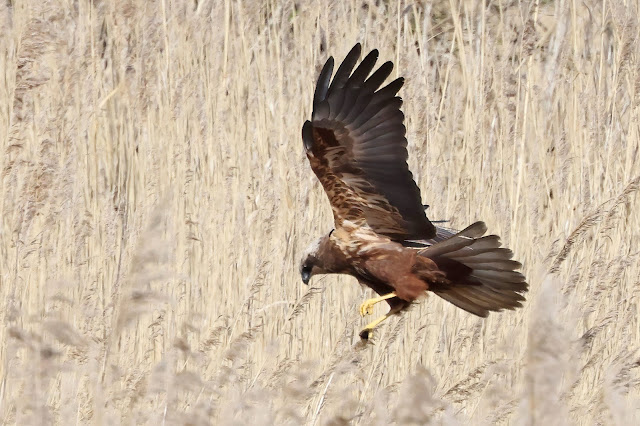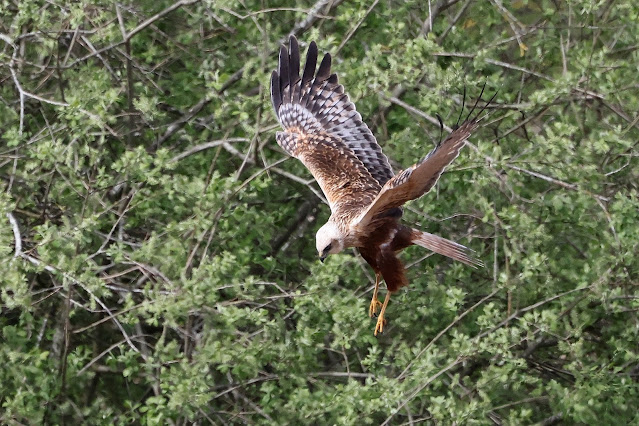7th April 2024
After a most successful morning at Fingringhoe Wick with the Nightingales I moved on to Abberton to hopefully photograph my first Yellow Wagtails of the year. I started at the old road just in case the two Nightingales there were showing, but although one was singing somewhat intermittently it stayed deep in cover. Time therefore to have a quick look at the insects.
Just two butterflies on show, a Green-veined White and a Peacock, so it would appear that the Speckled Wood that had been on disply earlier in the day was having a rest.
Then I found an insect that had me totally baffled. A very weak flier with legs dangling it eventually made it across to the brambles.
Sitting on the brambles in the sun it showed itself to be a very attractive insect and larger than it appeared in flight. Apparently it is the Cuckoo Bee Nomada goodeniana of the Buffish Mining Bee Andrena nigroaenea. My thanks go to Simon Knott for the identification.
On the Layer de la Haye causeway there were a few winter ducks remaining like this male Pochard
There was also a pair of Goldeneye..................
......................and despite the best efforts of the male to display.............
......................the female remained asleep. Her one eye open is keeping an eye on me.
So finally on to Billets Farm, the Yellow Wagtail hotspot of Essex. There was a pair of Sky Larks in the famous sheep field, but they were totally outnumberd by the Yellow Wagtails, all males.
For whatever reason this field attracts good numbers of Yellow Wagtails every year during both spring and autumn migrations and I suspect it is because, due to the grazing of the sheep, the length of the grass is ideal. Today I counted 16 individuals, but the day after there were 30+.
Billetes Farm is definitely Yellow Wagtail City!!!!






































































